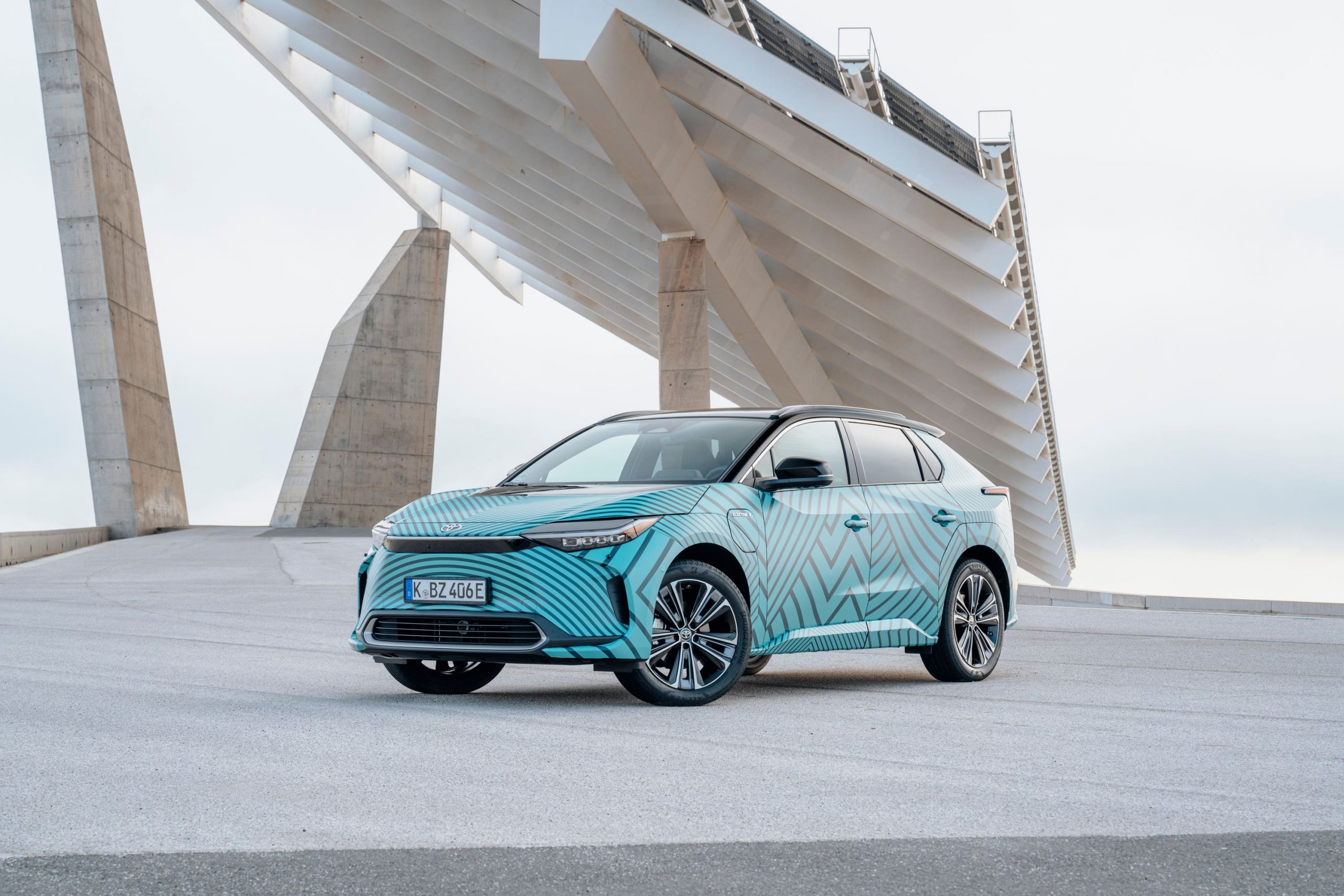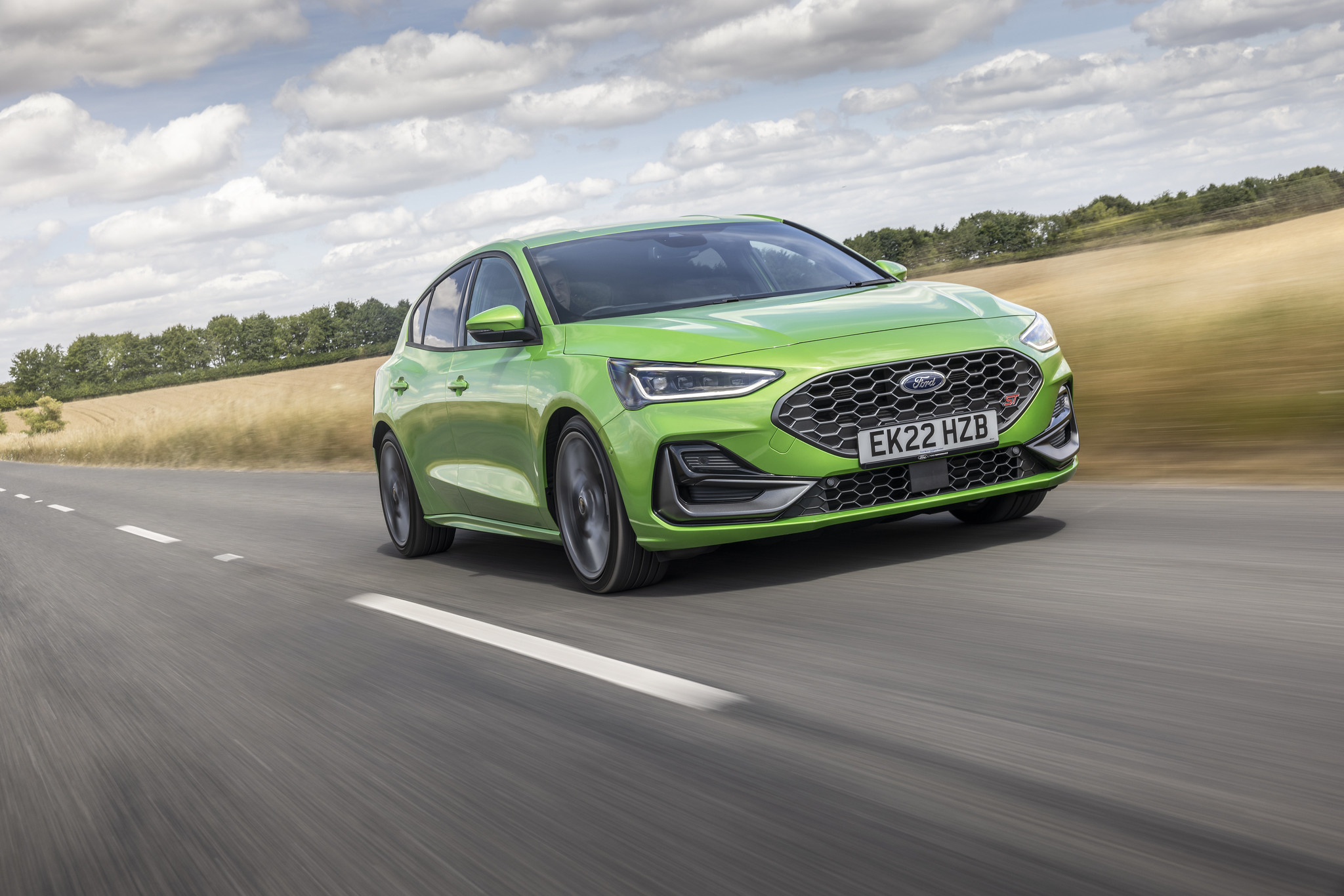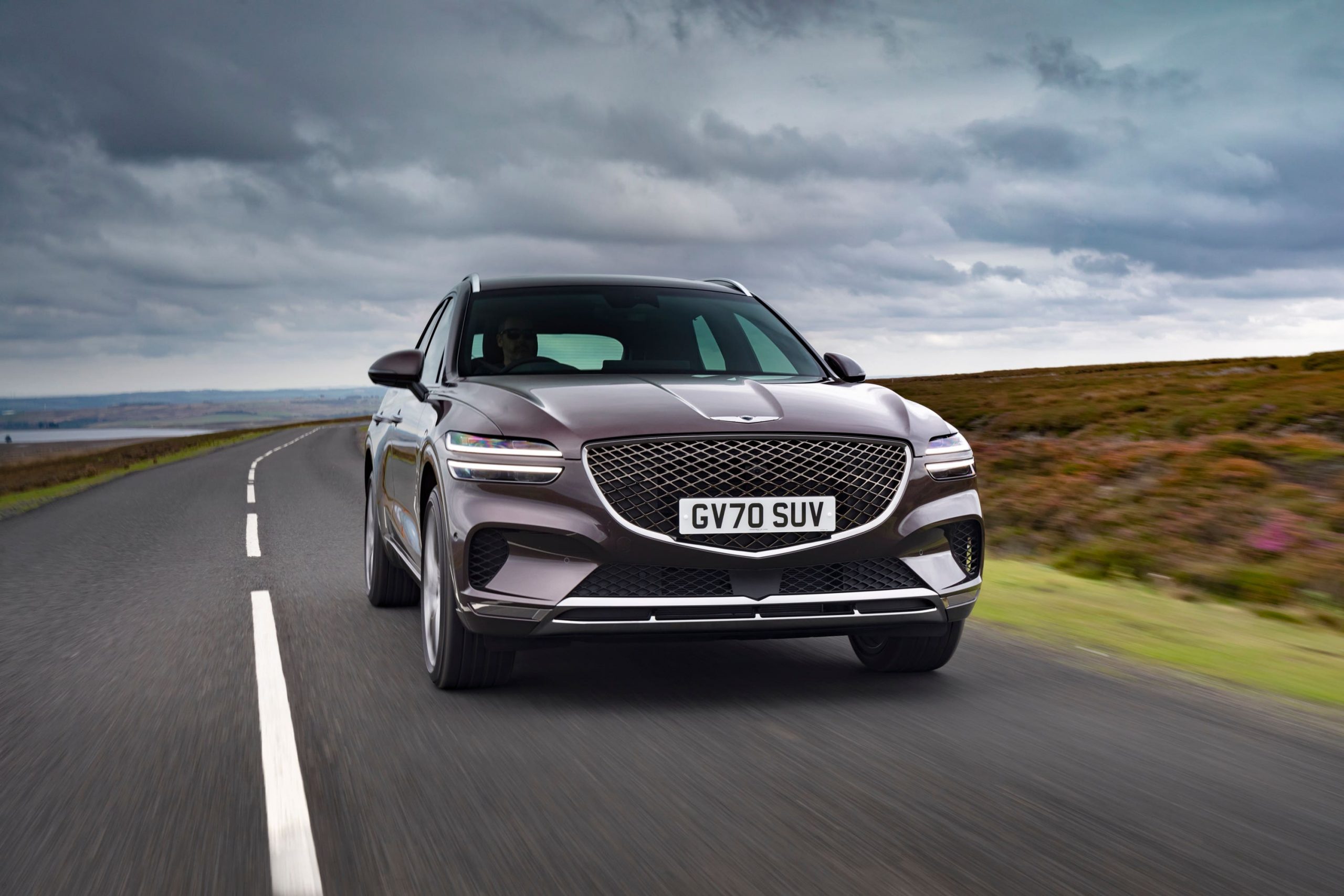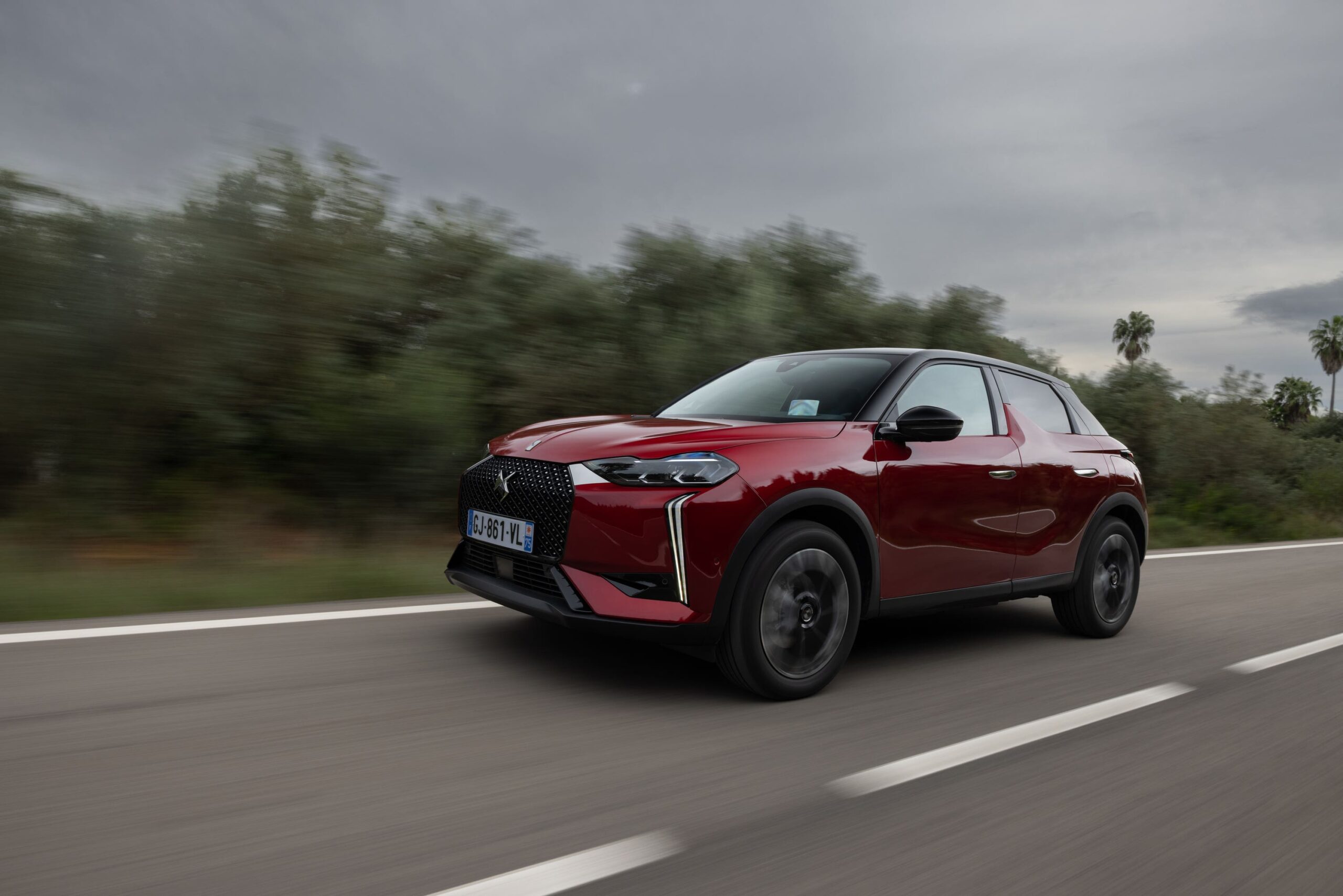Toyota has unveiled its first battery-electric vehicle. TED WELFORD heads to Barcelona to try it out in prototype form
Toyota has led the way when it comes to hybrid cars for a quarter of a century and has produced more than 15 million electrified models to date.
But for a firm with such a vast amount of experience when it comes to hybrids, it’s taken a remarkable number of years for the firm to lose the engine and create a pure-EV. The wait is now over, though, with the arrival of the bZ4X. Representing a bold new step for the world’s largest car company, has it been worth the delay?
We’ve been to Barcelona to put a pre-production prototype through its paces, though it’s pretty close to the finished article – bar the funky disguise used with these test cars.

Make no mistake this is no normal Toyota with an electric powertrain squeezed in – this is a brand-new model based on a bespoke platform designed purely for EVs. It’s given Toyota’s engineers greater scope when it comes to the car’s look and packaging.
Its name also needs a bit of explaining. ‘bZ’ stands for ‘beyond zero’; essentially Toyota’s pledge to do more to improve the planet than just creating zero-emission models. Meanwhile, the ‘4’ translates to its size, and the ‘X’ the fact it’s an SUV. You can expect five more EVs from the Japanese car firm with a similar naming strategy in the next few years, while it’s worth noting that the BZ4X has partly been developed with Subaru, who will rebrand it as the Soltetta for its first EV.
At launch, there’s the choice of two bZ4X models – both of which use the same 71.4kWh battery, but with the choice of front- or all-wheel-drive – the former using a single motor with 201bhp on the front axle, and the latter two equally-sized motors (one on the front and one on the rear) to make a combined 215bhp and 336Nm of torque.

By EV standards it’s not a massive amount of power (it’s worth remembering that plenty of the bZ4X’s rivals, including the Hyundai IONIQ 5 and Volkswagen ID.4, offer 300bhp) but it’s still enough to take this SUV to 60mph in 6.7 seconds, with the top speed capped to 100mph.
As for range, the BZ4X’s figures are yet to be fully confirmed due to them not quite being ready for sign-off, but Toyota says it should be able to travel ‘more than 255 miles’ in all-wheel-drive form, or 280 miles if you stick with just the front motor. As for charging, it can be plugged in at up to 150kW, meaning an 80 per cent charge will take around half an hour.
Even though our test car isn’t quite the finished product, Toyota largely seems to have hit the nail on the head when it comes to the way the bZ4X drives. Though the proof in the pudding will be back on Britain’s poor-quality roads, it seems to ride impressively well, despite sitting on relatively large 20-inch alloy wheels.

Though it might not have the outright pace of some of its competitors, it feels more than powerful enough for a car of this type. It handles well, too, having a good degree of weight to the steering, and offering only a small amount if body lean. There is quite a lot of wind noise generated, though we expect this to be improved with the production car.
The other trick up the bZ4X’s sleeve is its off-roading ability, helped by the tie-in with Subaru. Featuring a dedicated X-Mode for muddier and snowier terrains, as well as a feature known as Grip Control – essentially an off-road cruise control – this Toyota is remarkably accomplished on tougher terrain, providing you go for the all-wheel-drive car.
Even though Toyota has already unveiled the bZ4X in full, our test cars were still wearing a disguise – used to signify that they are still in prototype stage, as there are currently just four versions of this SUV in Europe.

However, the thing that immediately surprises you about the bZ4X is its size. A bit like the Hyundai IONIQ 5, it doesn’t look all that big in pictures, but up close it’s a fair size, and is actually longer than Toyota’s hybrid RAV4 SUV, even though it’s lower, which gives it a neater presence. The production cars will feature huge chunky black plastic, which in pictures does look a bit strange, though will hopefully suit a darker colour, rather than the grey pictured.
The bZ4X’s interior represents quite the shift for Toyota, headed up by a new 12-inch touchscreen, which is far sharper and easier to use than the systems from this firm of late. Beneath it is a new touch panel for adjusting the climate settings – not too dissimilar to those used on the Hyundai Tucson.
The use of Toyota’s bespoke e-TNGA platform also frees up a huge amount of space, with the bZ4X offering a vast amount of legroom in the back, while the 452-litre boot is a decent size. There are some weird omissions, though, the main one being the fact it has no glove box whatsoever, a strange idea given this is likely to be bought by families.
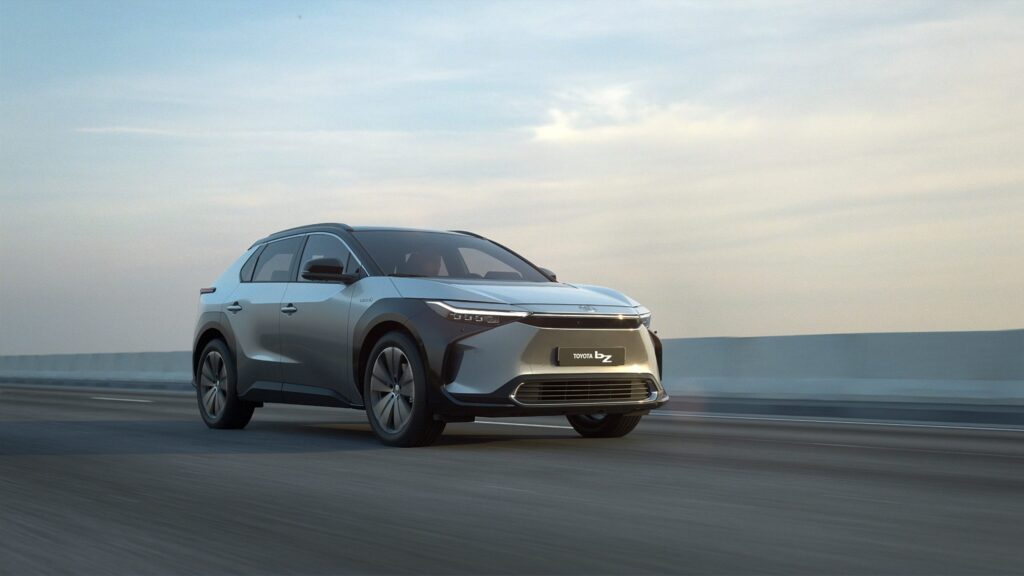
The driving position is also slightly odd – and likely won’t suit all drivers – because the digital driver display is blocked by the rim of the steering wheel. It’s not a too dissimilar setup to that seen on modern Peugeots, but just seems a bit of an afterthought from a marque known for its fantastic engineering.
At the back of the mind, there was the thought that the bZ4X might just have been engineered by Toyota as a quick fix to address the fact it didn’t have an EV in its range. But from our first drive of this prototype, it’s safe to say that’s not the case.
This is an EV that’s good to drive, practical and well-built, while offering genuine off-roading ability – something that none of its rivals can offer. The lack of glovebox, average range and questionable driving position will likely mean the bZ4X doesn’t quite sit at the top of the family SUV class, but it’s certainly a very positive sign of things to come from Toyota.







